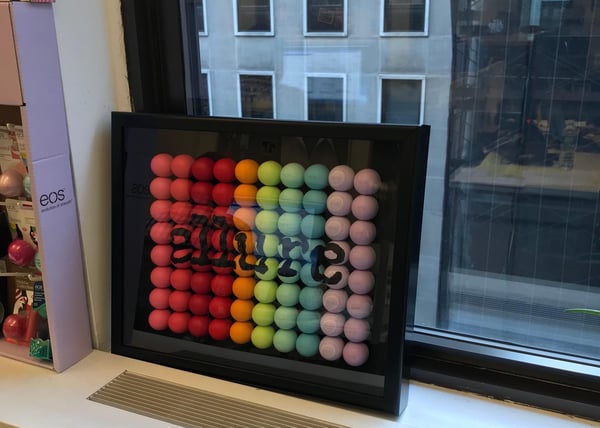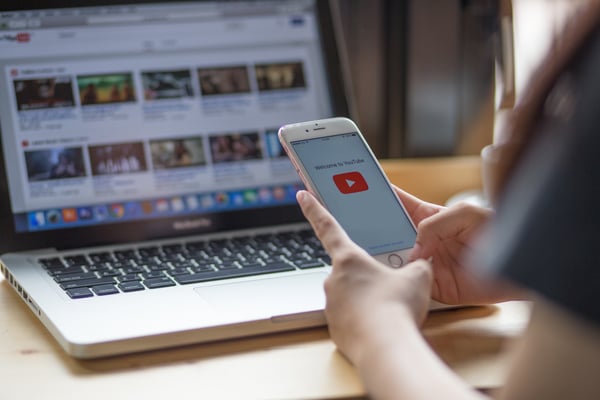
In this time when we can reach millions of people, it's achieved with just a YouTube video. It's easy to omit that within a thousand of impressions, likes, and statistics, there are actually people with names, faces, and personalities. The goal for most major brands is to impact mass audiences. It's important to remember that the most effective type of communication is interpersonal, where two interlocutors speak directly to each other.
At the center of this statement is where we find one of the most important PR trends we will see this 2018: customization.
What does it consist of? This trend addresses to always seek human and close treatment of all tactics. The time of sending information to mass and impersonal media has ended. Instead, we will seek to create more close relationships between the PR team of each brand and its media counterparts.
Tactics such as sending personalized invitations, non-mass emails, WhatsApp groups, and one-to-one follow-ups will take more value in a world where automation seems to invade everything, even if they seem simple and even basic.
Some good examples of this trend, we can find them in the world of beauty, where the PR packagings between more customized, the more massive outcomes and cause huge investment returns. A proof of this is a simple video search titled and labeled as "PR UNBOXING" that yields more than 1.8 million results.
%2013.03.50.png?width=600&name=Captura%20de%20pantalla%202018-03-13%20a%20la(s)%2013.03.50.png)
Another great example of customization in PR is a tactic executed by eos. A customized frame was sent to different magazines, where the products were shown and the logo of each magazine was included. These types of details help build stronger relationships and achieve more memorable actions.

2. Real time: expertise and immediacy
Time is a luxury and PR has less opportunity to get that opportunity. Recently, agencies, brands, and executives had days and even weeks to plan a strategy and to react to any situation, this is no longer the case and the ability to be able to join relevant conversations in real time is extremely important.
Your PR agency schedule should change. Both your strategy and your team must understand that communication never stops and must be monitored, evaluated and finally exploited.
3. Visual Storytelling

The use of video content has never been so crucial for brands. It's no longer a luxury to create it but a basic need for communication. Take as a reference the following statistics, in any month, in this January 2017 case, the 90% of all Mexican Internet users watched online videos.
Taking this into consideration it is clear that any communication strategy that a brand carries out should have contemplated the use of this format. Again, the times of sending a word document and expecting good outcomes are already far behind.
4. Re-calculate the competence of your brand

In a totally globalized world like ours, concepts such as competition deserve to be updated.
The idea that a brand only competes with another company that produces exactly the same product, is already unsustainable. It's necessary that both, brands and communication agencies (PR and Social) remember that the offer is global and that a product not only competes with the others that are on the same shelf, but with everything offered by the store. If we see it in digital terms: with everything offered by Amazon, Mercado Libre, e-bay, etc.
In addition, certain industries that we might consider saturated, now also compete with complementary markets; this means, a beauty brand not only competes with other beauty company, but also with fashion brands, or with the brands and products growing offer that are self-designated as "wellness."
On the other hand, if we look closely at the struggle, taking into consideration the consumer purchase, brands also compete against experiences and entertainment. We could say that a beauty consumer, can compare with the same value (at the time of purchase), a pair of earrings, a shadows palette and a spa visit.
5. SEO optimization
Much has been talked about Digital Public Relations (PR), and its definition can vary depending on who you ask. There is a common factor in which all Public Relations specialists must agree: Digital Public Relations can’t exist without SEO.
SEO 101
Let's begin with the basics: SEO (Search Engine Optimization) refers to the digital content optimization, in text and images to improve its performance in search engines, mainly Google.
When any of us or when one of our consumers searches for products or services on the internet (consider that 90% of Mexicans use Google), they will find it in a matter of seconds with 10 possible results and only the first place will take 60% of the clicks of each search. What does this mean?
If you want your brand to compete against the traffic generated by the search, you must position your web presence in the first places, as well as the content related to your products and services.
Let's think for a moment as a consumer: when was the last time you clicked the second page of Google results? The 3rd? 4th? To be more accurate, never.
Now, how do we manage to position our content on this first page? We recommend you read our step-by-step guide to potentiate your PR strategy, in this link.

